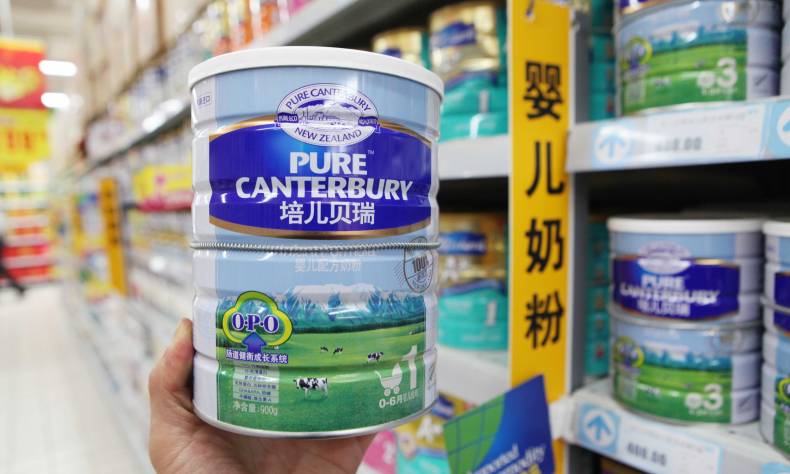
Chinese Milk Powder Pricing Revolution to Come
New Zealand is known in China as a land less of hobbits as it is elsewhere and more for its unsullied environment, free from the toxic haze and overwhelming crowds that bog down China’s urban areas. That is to say it is “clean and green,” or, as ads from Tourism New Zealand proclaim, “100% Pure.”
This is a reputation that often extend to the country’s exports, which in China’s case involve one particularly in-demand item: infant milk powder. Because of the 2008 Sanlu milk scandal and general food security concerns among China’s growing middle-class, foreign milk powder is highly sought-after, with skyrocketing demand eventuating in a milk powder drought in Australia after China’s November 11 Single’s Day online shopping bonanza.
Because of New Zealand’s huge dairy production and limited domestic consumption, the country is the world’s largest exporter of dairy products, leading a reputation as the “Saudi Arabia of milk.” So combine that premium reputation for being 100% pure with a product heavily in demand and what is the result? Severely inflated prices.
Now, perhaps those prices are a reflection of high demand in China, as high-priced foreign milk powder keeps on selling, but perhaps there is a little too much being made of the New Zealand brand. Or not, according to Theo Spierings, CEO of New Zealand dairy cooperative Fonterra. Spierings was unsurprisingly unimpressed when Synlait, a small competitor to Fonterra – which has sometimes been referred to as a monopoly by critics – started selling milk powder for prices almost three times lower as part of a joint-venture agreement with New Hope Nutritional Food, a Chengdu-based infant milk powder company.
Spierings called the cheaper pricing strategy “absolutely the wrong developments,” but how else would one expect the man in charge of a monopolistic company making profits from China’s increased demand and over-inflated prices?
New Hope has been posting pictures online that demonstrate how much a can of milk powder costs around the world compared to how much it costs in China – basically how much the Chinese consumers have been getting ripped off – and the picture (below) speaks for itself (h/t Professor Keith Woodford).
[image-xsmall]https://keithwoodford.files.wordpress.com/2015/05/internaitonal-infant-formula-prices.png[/image-xsmall]
This is a game changer and has the potential to revolutionize the milk powder industry in China, forcing companies to work harder for revenue as it will no longer be possible to sit back on unearned laurels and capitalize on massive demand alone. Chinese parents must be ecstatic to see high-quality milk powder now at affordable prices.
What is regrettable is the position Mr. Spierings is taking in his attempts to blame Synlait for the downfall of the nation (hyperbole), guilting its competitor with comments like “I can’t tell competitors what to do and what not to do but it’s not doing us any favors as a country.”
That is an inexcusable, borderline arrogant position to take. Market forces exist, and companies often offer low prices in an attempt to generate market share. It is difficult to see this strategy not bearing harvest for New Hope and Synlait, and so Fonterra – and all milk powder companies looking to China for that matter – have been served notice: adapt or die.
 Facebook
Facebook
 Twitter
Twitter
 Linkedin
Linkedin
 Google +
Google +











Moo! Buy my milk and make me rich.
Dang it! They sure put the “il(l) in milk, and the “ow” in cow. I crack myself up!
They could make a MOOvie about this!